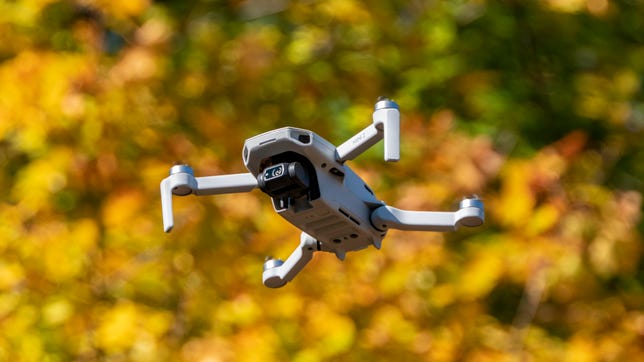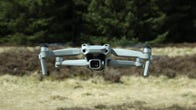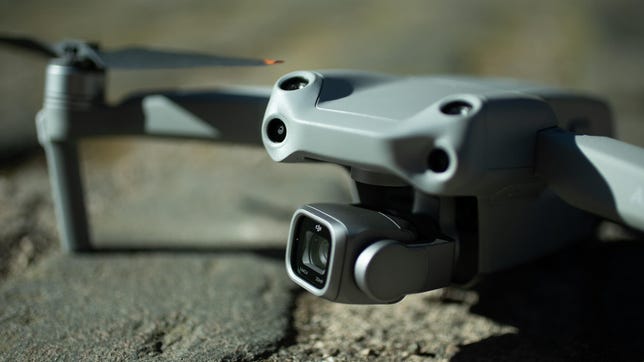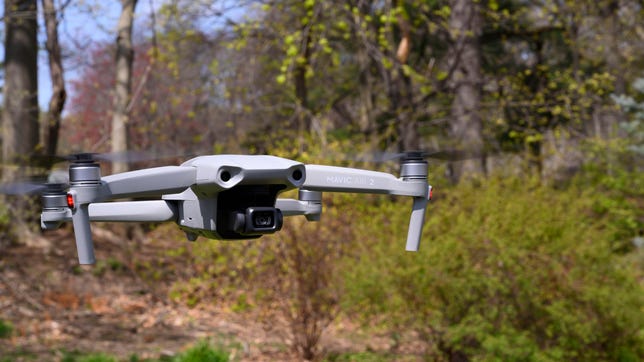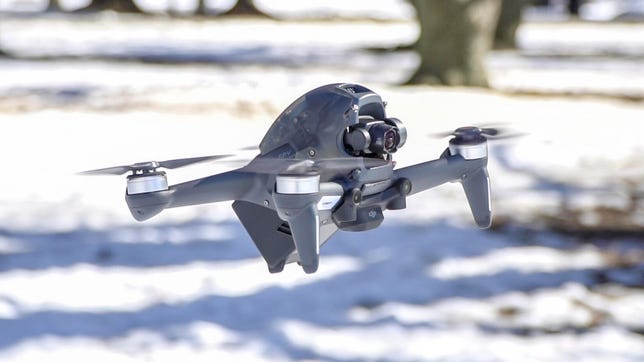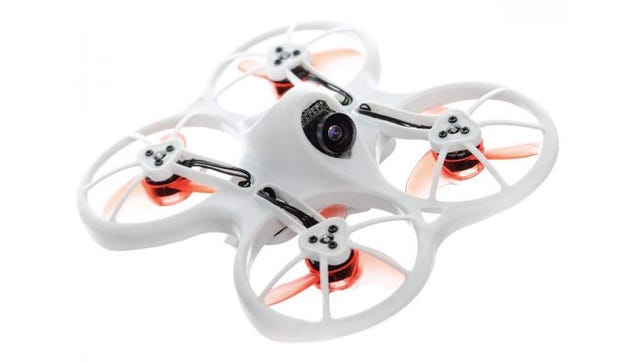[ad_1]
If you’ve never flown a drone before, you’ve got lots of fun in store. Learning how to maneuver and fly a drone is an exciting challenge. But it’s even more enjoyable when you can use a drone camera to take photos and videos. The best drone cameras can bring you views that you’ve never before seen. The good news is that these days, you can get a great drone with a camera for less than $500.
And even a budget drone for beginners can offer plenty of fun. For about $50 (about £40 or AU$80), you can get a basic quadcopter drone with an integrated camera that can fly for nearly 10 minutes on a charge. But there are plenty of affordable options for drone owners that fall somewhere in the middle, offering various combinations of features, video quality and price for every drone enthusiast. So, whether you’re looking to get into drone photography or just want an indoor drone to fly around your living room, we’ve got some recommendations. Here are the best drones for the beginner and intermediate drone pilot looking to spend less than $1,000.
Best drones, compared
| Best drone for most people | Best beginner drone | Best camera drone | Best racing drone for beginners | |
| Model | DJI Mini 2 | Ryze Tello | DJI Air 2S | Emax Tinyhawk 2 |
| Buying info | See it at Best Buy | See it at Amazon | See it at B&H Photo | See it at B & H Photo |
| Price | $449 | $99 | $999 | $175 |
| Photo | 12 megapixels | 5 megapixels | 20 megapixels | N/A |
| Video | 4K at 30fps | 720p at 30fps | 5.4K at 60fps | FPV use only |
| GPS support | Yes | No | Yes | No |
| Flight time | 31 minutes | 13 minutes | 30 minutes | 8 minutes |
| Weight | 249 grams | 80 grams | 595 grams | 9 grams |
| Requires registration (in the US) | No | No | Yes | No |
DJI is the undisputed leader in drone technology and dominates the market, thanks to a vast lineup of cheaper drone models (such as the Mavic, Mini, Tello and Phantom) for consumers, hobbyists and professionals that start at around $100 and go up to expensive drone models that exceed $20,000. (In December 2020, the US Commerce Department added the company to its Entity List, which restricts companies from exporting US technology without a license, but which is not not expected to impact product availability.) And there are other reputable brands making high-quality consumer quadcopters, including Parrot and Skydio, as well as countless upstarts making inexpensive drones you can buy at Walmart, Amazon and Best Buy. You can even get a mini drone or drones with autonomous flight or intelligent flight modes if the fancy so strikes you.
As with most things, the more you spend, the more you get. And while there are exceptions, most flying drones under $50 may frustrate you with limited features, primitive controls and just a few minutes of flight time. As you explore the options, here are a few key things to consider:
- Controls: Many drones come with a dedicated remote — they often look like game controllers — and can also be piloted using a smartphone app, or with a combination of the two. Some come with first-person view goggles that give you an immersive view of the drone flight as if you were in a cockpit.
- GPS support: Support for GPS (or GLONASS, the Russian variation) will make your flights and video more stable, assist with taking off and landing and cut down on crashes. Drones with GPS often have a “return to home” feature that can recall them automatically if you get into a sticky situation.
- Sensors: Air pressure sensors and vision sensors (aka cameras) help with altitude assistance or “holding” as well as obstacle avoidance and will let you concentrate on getting the best shots from your drone instead of constantly adjusting the throttle.
- Batteries: The lithium-ion batteries that power most of the best drones run for 15 to 25 minutes on a charge, though an increasing number of mid-tier models, like the DJI Mini 2, can now fly for 30 minutes or more. Still, you’ll need spare batteries — they range from $45 to $70 for the DJI drone models included here — to extend your flight time beyond that. Toy drones typically fly for 5 to 10 minutes.
- Rules and regulations: In the US, if your drone weighs 250 grams or more, you’ll need to register it with the FAA. And regardless of the weight, US national parks are off-limits — as are many state parks. Most counties and municipalities have their own regulations regarding remote control aircraft. The UK has similar rules (as does the EU), based on the drone’s weight. Always make sure you’re flying legally, wherever you are.
We’ve outlined our top picks for the best drones for kids and beginners, intermediate users and “prosumer” enthusiasts, as well as an introductory drone for folks interested in racing, which is a whole scene unto itself. We’ll update this list periodically. We’ve also included a more in-depth buying guide on the best drones below, with more information about the key things to consider before you buy.
Joshua Goldman/CNET
DJI has unveiled a new version of its smallest and lightest camera drone — and, once again, we think this mid range drone is the best choice for people who want a serious flyer.
The Mini 2 weighs in at 249 grams (8.8 ounces) which is significant because it means that — in the US, at least — you don’t need to register it with the FAA. Though it costs $50 more than the original Mavic Mini, it comes with a few key upgrades and many of the best features you’ll find on the company’s larger models. It folds up neatly for easy portability, includes the company’s new compact controller (which also folds up) and can fly for up to 31 minutes on a charge. And the Mini 2 features support for DJI’s OcuSync 2 wireless technology, which both enhances connection strength and extends its range to 6.2 miles (10 kilometers).
The Mini 2’s updated 4K camera is dynamite: You can now shoot 4K video at up to 30 frames per second (with solid 2x digital zoom performance) and, as with the previous model, 12-megapixel photographs. The three-axis motorized gimbal ensures you end up with smooth shots.
One of the reasons that the foldable drone is so light is that it has no sensors for obstacle avoidance and recognition. That means there will be a learning curve and some crashing; the upside is that you will actually learn how to fly it. And once you get the hang of it, the Mini 2 is stable, nimble, safe to fly and quieter than other DJI models.
Spending an additional $150 on the Fly More combo gets you three batteries, a two-way charging hub, carrying case, three replacement propellers and a handful of other spare parts.
DJI
If you or your kid are looking for a simple way to learn the ropes, this inexpensive flying drone model is a great place to start. The Ryze Tello is inexpensive, safe to use and easy to fly. It’s stable enough for newbies — with sufficient power to fly outside, though not in high winds — and offers a handful of preprogrammed flight patterns and up to 13 minutes of flight time per charge. It doesn’t come with a dedicated controller or a particularly great camera, but it’s good enough to shoot 720p video and 5-megapixel photos.
You’re receiving price alerts for Ryze Tello
Andrew Hoyle/CNET
The Air 2S is physically identical to the Air 2, which was launched in 2020, but there are some key upgrades if you’re looking for the best imagery from the sky. The camera sensor is physically larger (it’s actually a 1-inch sensor) which allows it to capture more light and provide better dynamic range, along with 5.4k video. Both still images and videos look superb, while long flight times, a wide variety of automated flying modes and sensors on all sides make it easy to shoot cinematic footage.
You’re receiving price alerts for DJI Air 2S
Joshua Goldman/CNET
Launched in 2020, the Air 2 is still a great option to consider. This larger drone with a sturdier build than the tiny Mini 2 along with much improved flight times of up to 30 minutes from a full charge. It has some impressive camera specs. The drone camera is capable of shooting full 4K video at 60fps and capturing 48-megapixel photos. It’s a few hundred dollars cheaper than the new Air 2S, which has more camera bragging rights with its 5.4k video and 1-inch image sensor.
The Air 2S is the one to go for if you want the best image quality, but if you’re after great all-round performance and want to save a bundle the Air 2 is absolutely worth a look.
The Air 2 has a top speed of 42.5 mph and APAS 3.0 technology, which helps it more fluidly navigate around obstacles instead of just stopping to avoid them. That noted, if obstacle avoidance is your top priority, the $1,000 Skydio 2 remains the gold-standard — and an all-around excellent choice in its own right.
DJI makes plenty of other drones with superior specs — even better cameras and photography capabilities — but they come with higher prices. Higher-spec options include the physically identical DJI Air 2S, the DJI Mavic Pro, which costs $200 more than the Air 2, and the Mavic 2 Pro 4K drone, which costs quite a bit more. Still, for most people who aren’t super-experienced hobbyists or professional drone users, we think the Air 2 offers the best combination of design and features in its price range.
You’re receiving price alerts for DJI Air 2
Drew Evans/CNET
FPV drones allow you to fly using a headset that gives you a view directly from the drone’s perspective. It can be an exhilarating way to fly, but it’s typically only been available to enthusiasts prepared to build their own FPV system. DJI’s FPV is the first ready-to-fly FPV drone available, offering that sweet, sweet first-person perspective, incredible 97mph top speeds and stabilised 4K video.
Flying it takes a bit of getting used to, but if you’ve been wanting to get those dramatic FPV shots that have been dominating Instagram in recent months, it’s the only drone on this list with the skills to get you there.
You’re receiving price alerts for DJI FPV
Emax
Though mainstream drones like the DJI Mini can fly fast, racing drones fly even faster, capable of hitting speeds above 100 mph. They’re also much more agile, built for acrobatic maneuvers with you at a set of manual controls. That means there’s a learning curve that usually involves some crashes.
Getting started will be neither quick nor easy, but for a racing drone, the Emax Tinyhawk 2 keeps things relatively simple. You’ll still need to learn how to pilot the thing, but the process will be less expensive and less frustrating than other entry-level systems. For one thing, you don’t need to worry about getting all of the individual pieces to work together — or soldering anything, which is required for many DIY models.
The 7 things to consider before you buy a drone
New to the world of modern drones? Don’t worry, we’ve got you covered. Here’s a quick overview of what any beginner needs to know to find the best drones for their money.
Cheaper drones aren’t necessarily for beginners
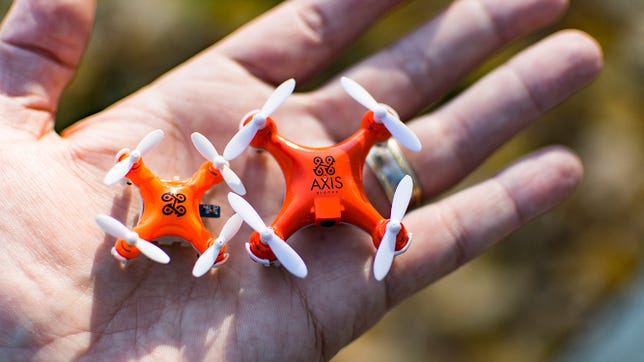
Tiny inexpensive quads like these can be a pain for first-timers.
Joshua Goldman/CNET
Like many things in life, you get what you pay for with consumer drones: The more money you spend, the more features you get that make flying easier. For example, while the Hubsan X4 quad mentioned at the top isn’t a bad place to start, it lacks sensors found on a premium drone to help it hover in place on its own or return to you if you get in a jam.
GPS is invaluable for new drone pilots. It’s worth paying more for if you’re looking for stable flying out of the box, especially for aerial photography and videos. You won’t typically find it on toy-grade drones, so new pilots might find toy drone models to be frustrating even though they can be good to practice with.
Flight times are still relatively short
Battery life is the drone industry’s Achilles’ heel. Though there are a handful of models that can remain airborne for 30 minutes or more on a charge, that may be under ideal testing conditions in a controlled environment. The faster you fly, the more weight you add; the stronger the winds, the quicker a drone will sap its battery. Plus, there’s the time it takes to get up in the air and land — and that’s often not accounted for in the flight modes specs quoted by manufacturers.
Our general rule of thumb is to take whatever the manufacturer claims and subtract 5 to 10 minutes for a midsize drone. Toy drones typically get between 5 and 7 minutes of good flying, though some can hit the 10- to 12-minute range.
The price of the drone is only the beginning
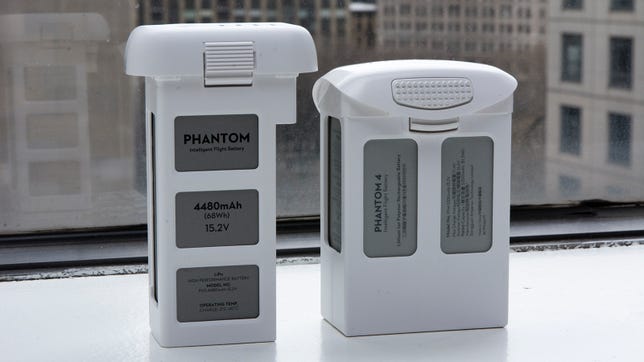
Depending on the aircraft, extra batteries can run you from $5 for toys to more than $100 each for camera drones.
Joshua Goldman/CNET
You’re going to want a couple extra batteries, some spare propellers, maybe some prop guards and perhaps a quick charger, so you’re not waiting hours to fly again. You’re more than likely going to crash, which could lead to repair costs — either for replacement parts or shipping it back to the manufacturer for repairs. (This is exactly why DJI offers crash insurance for new drones.)
Before you buy a drone, it’s worth spending a little time researching the price and availability of replacement parts, batteries and other accessories. And be cautious of third-party parts — especially batteries and chargers — which may be inferior to those made by the drone manufacturer.
Everyone will assume you’re invading their privacy
When you’re out flying in a public space, or even in your own backyard, anyone who sees you doing it will think you’re spying on them or someone else. You could be standing in the middle of a 20-acre field with no one in sight and your drone no more than 50 feet directly overhead and you might end up answering questions about being a peeping Tom. It’s happened to us. Repeatedly.
And along those same lines….
Everyone but you thinks they’re dangerous
It doesn’t matter if you’re the safest drone pilot around or that you could do more damage hitting someone with a baseball than a drone — onlookers may feel threatened. After all, nothing about plastic blades spinning at high speeds screams “safety.”
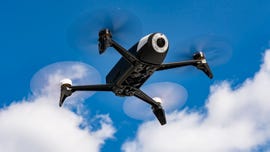
Parrot’s Bebop 2 has some nice safety features including propellers that stop instantly if they hit anything.
Joshua Goldman/CNET
As such, US-based pilots may benefit from an Academy of Model Aeronautics membership. Along with a whole host of benefits including access to AMA-member flying sites, the $75 annual membership protects you with $2,500,000 of comprehensive general liability insurance as well as $25,000 in accident or medical coverage, $10,000 maximum accidental death coverage and $1,000 fire, theft and vandalism coverage.
Finding places to fly can be a challenge
In population-dense places like cities and metropolitan areas, it can be difficult to find places to safely and legally fly. US national parks are off-limits. Regulations differ among state, county and municipal parks. And then there are the no-fly zones, which puts many metropolitan areas out of bounds as well as just dangerous, because of buildings, people and cars.
Before you buy a drone — even a toy one, if you plan to fly outside — you’ll want to visit AirMap or download the FAA’s B4UFly app to check for no-fly zones. These don’t cover state or local ordinances, though, so you’ll need to do additional research on your chosen environs before you fly.
The EU and UK’s drone rules are based mostly on how heavy a drone weighs and no longer differentiate between people flying for fun, or people flying for professional purposes. Europeans among you with new drones should make sure to fully familiarize yourself with the 2022 drone regulations and ensure both you and your drones are registered before taking flight.
Any remote control aircraft except ‘toys’ need an FAA registration in the US
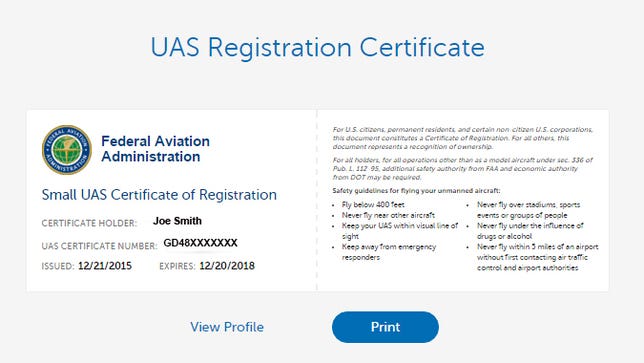
Screenshot by Sean Hollister/CNET
The US Federal Aviation Administration is requiring anyone who wants to fly an unmanned aerial vehicle that weighs between 0.55-pound (250 grams) and 55 pounds (approximately 25 kilograms) for recreation or hobby to register with the agency. Civil penalties for not registering such an unmanned aircraft may include fines up to $27,500. Criminal penalties may include fines up to $250,000, imprisonment for up to three years or both.
Most sub-$100 UAS drones fall under this weight. A kitchen or postal scale can be used to weigh your drone or you can check with the manufacturer. Also, this applies to both store-bought and homemade aircraft.
The registration cost is $5 and it can all be done online in a matter of minutes. You don’t have to register each aircraft you own — just yourself; you’ll be given a number to attach to what you’re flying. That’s it. Essentially, it’s the FAA’s way of getting you to agree that you’ve read its safety guidelines including staying more than five miles away from airports and below 400 feet.
The UK has its own registration requirements. Essentially, owners of drones that weigh more than 250 grams must register as a drone operator, which costs £9 annually. And pilots of drones that weigh more than 250 grams must pass a free online education course every three years. Australia has promised that new rules are “on their way,” but for now there are no official requirements.
Glossary: Know your RTF from your FPV
Like any hobby or technology, there’s a whole lot of lingo and abbreviations that come with the territory. Here are some of the ones you’ll come across the most.
- Ready-to-fly (RTF): A drone that requires little to no assembly and is ready to fly out of the box.
- Almost-ready-to-fly (ARTF or ARF): These drones may require some minor assembly and additional equipment such as a receiver (Rx) and radio transmitter (Tx, also called a radio controller).
- Bind-n-fly (BNF): These are essentially RTF drones with a receiver, but not a radio controller (you must buy one separately). But you can then use that controller to pilot other BNF aircraft, saving you some money if you decide to grow your RC aircraft collection.
- First-person view (FPV): The video feed direct from a camera on the drone. It can be used for framing your photos or videos as well as piloting. With drone racing, pilots usually wear FPV goggles for an immersive experience.
- Return-to-home (RTH): A safety feature that allows your GPS drone to autonomously fly back to the pilot’s location or starting point.
- Gimbal: A mechanical camera stabilization system that offers you smooth video and sharp photos even with fast movements or in high winds.
- Headless mode: Intended for beginner pilots. It keeps the drone traveling forward, backward, left or right when you move your remote’s stick in those directions, regardless of which way the front of the drone is pointed.
- Follow me: A feature that allows a drone to automatically follow a subject, typically using a GPS signal from a mobile device, remote control or a beacon attached to the subject being tracked.
- Brushless motor: Though more expensive than their brushed counterparts, brushless motors are more efficient, last longer and are quieter.
[ad_2]

